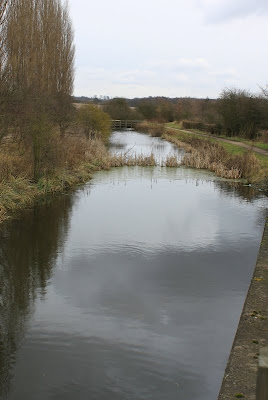B&Q's woeful customer service ethic.
23rd March 2010
Until today I was a fan of B&Q.
I still think that they have the best range of DIY products, but the customer service I received at their Erdington Branch in Birmingham stinks, and will make me think twice about using them again.
B&Q's 'white' tiles - can you spot the difference?
As you all know, I have been renovating the shower room on Wand'ring Bark and we purchased some rather nice not too expensive white tiles from B&Q's 'Underground' range. I spent Sunday sticking them on the walls and you can imagine my shock when mid way down the second box I started to pull out black tiles instead of white! In all there were eleven black tiles out of a pack of thirty which robbed me of all my spares for cutting, and then some.
With the adhesive rapidly drying on the wall I had a choice, scrape off all the mastic and trot off 25 miles to get another pack, or make the best of what I had. Of course, I did what any sane person would and pressed on hoping that there would be enough to finish the job. I did manage to cover the area but only by doing a bit of a mosaic work with the offcuts in a reasonably unobtrusive area - but if you buy a pack of white tiles it's reasonable to expect that they are all the advertised colour.
The label seems quite clear - white
I took the offending tiles back to B&Q today to point out the problem and to seek a measure of redress for the inconvenience caused, and the less than perfect end result which is directly attributable to their products being unfit for purpose. I had in mind a refund for the faulty box which cost the princely sum of £20. Not a big deal but its the principle of the thing. These things should not go unreported.
So you would think that some sort of apology was in order, wouldn't you?
Well, I spoke with the Complaints Manager who was quick to tell me that it was company policy not to give refunds on open packs, but was also strangely reluctant to apologise.
I insisted on seeing the 'Manager', but whilst she could see the problem with returning the offending pack in the middle of the job, repeated the fact that "there was no way she would / could give any form of refund".
This farce continued when she called the Tiling Manager (they all appear to be a manager of someting at B&Q - nice title but no authority!). He trotted out the same old line but far from apologising for the obvious inconveneince, or offer to take the matter up with the suppliers who were ultimately at fault, he told me that he had never seen a pack containing mismatched tiles in all his time at B&Q, and gave a heavy inference that I was lying to try and reclaim a poxy £20! Having said his peice he turned on heel and just walked away.
I was so tempted to pick up the offending tiles and smash them on the floor there and then, but I didn't because that would be just too childish.
Because I like B&Q's products, I buy most of my supplies from their stores - spending probably £1000 a year, but not any more.
Sure, if you want something small that you can see and check it before you buy it's a good store. But if you are thinking of buying someting larger, or something which may need a bit of customer service I would suggest you go elsewhere.
Buying some types of goods calls for a bit of trust, like assuming that a box marked white tiles will indeed contain just white tiles. And if they happen to contain a tile of a different hue, or are broken, it is reasonable to expect that the store will take some responsibility for it.
Sure, they could replace the eleven black tiles with white, but it's a bit late now and I can't see then coming down to WB and removing the 'mosaic' ones and applying replacements.
Whilst some businesses see the provision of good customer service as a black and white issue, B&Q's staff appear to live in the grey zone. I picked up a complaints / feedback ticket to log my iritation and I think I will simply refer them to this blog post. If they take any sort of remedial action I will let you know, but dont hold your breath.




















































